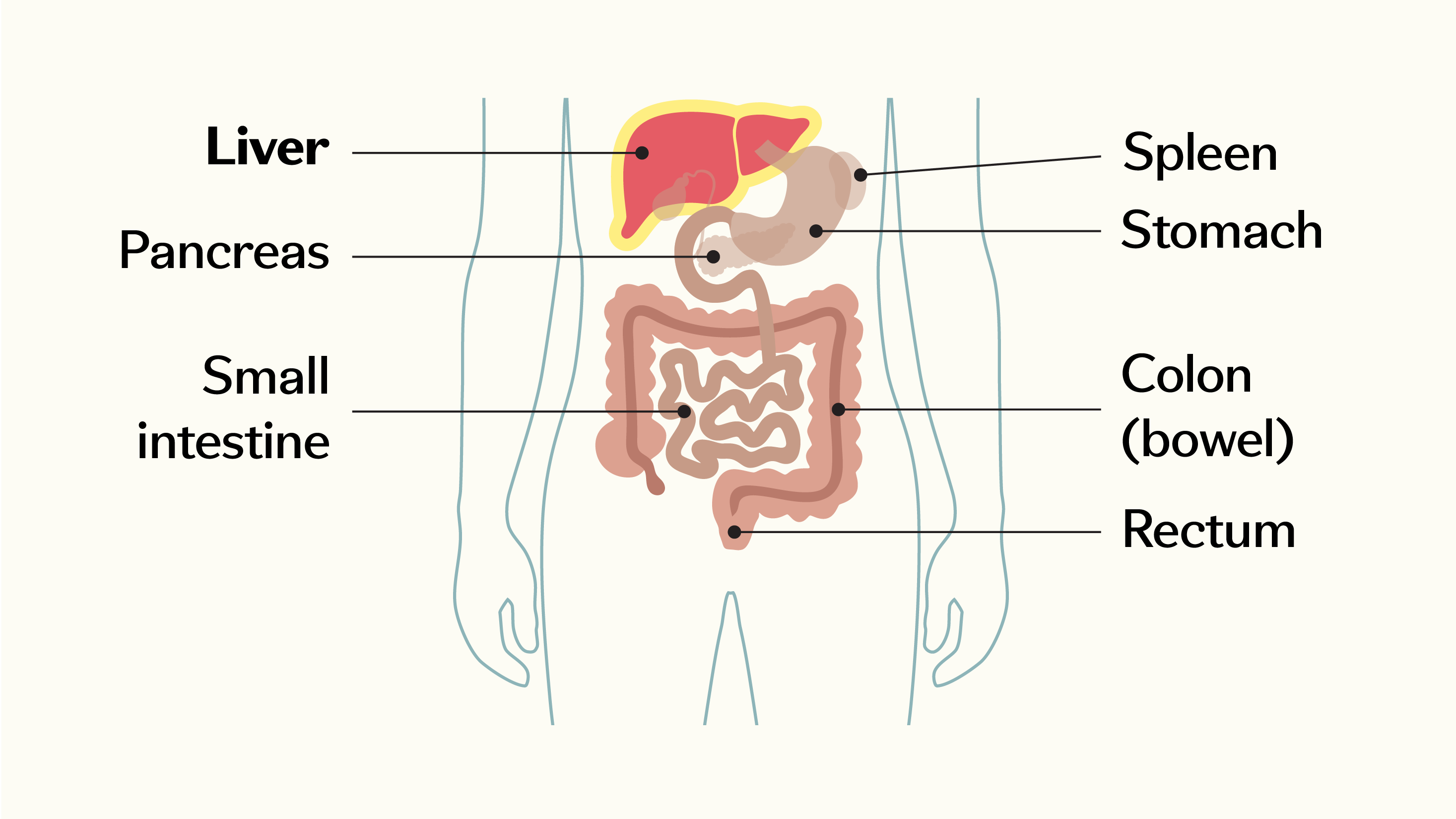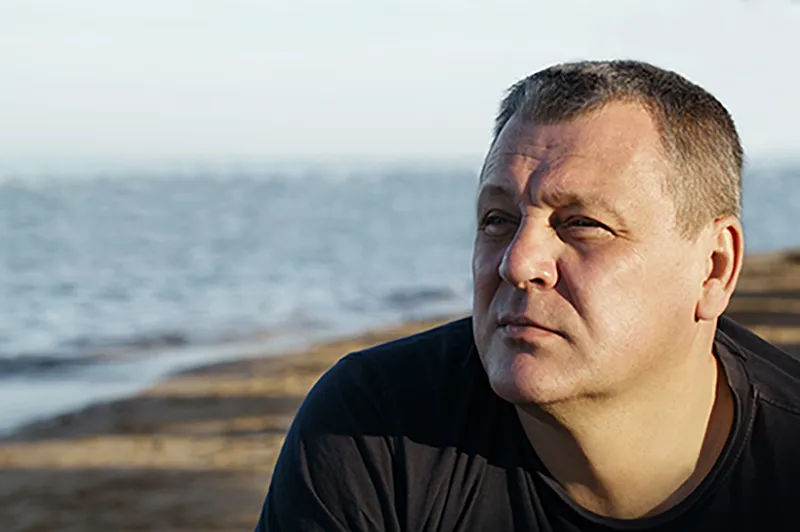The liver
The liver is found on the right side of your body, just below the rib cage. The liver does lots of important jobs in the body – over 500 jobs, in fact. These include:1
- Making enzymes to help digest and release energy from the food we eat
- Storing excess energy from the food we eat, for the body to use later
- Storing vitamins, iron and other nutrients, so the body has them available when it needs them
- Removing toxins from the blood and passing them out of the body
- Helping our immune system to protect us from bacteria and viruses in the digestive system
- Making proteins that help our blood to clot when we have a cut

How liver cancer starts
Cells are the building blocks of the body.2 Liver cancer starts when liver cells begin to grow and divide uncontrollably, forming a cluster of cells called a tumour.3
The main causes of liver cancer are unknown, but there are certain things that can increase the chances of someone getting kidney cancer. These include:3
- Getting older
- Being male
- Having certain infections, such as hepatitis B and C
- Smoking
- Having scarring of the liver, called cirrhosis
- Having diabetes
- Being overweight
- Having certain conditions that are passed down in families (known as inherited conditions)
But it’s important to remember that not everyone who ticks the boxes above will get liver cancer.4
Types of liver cancer
The type of liver cancer someone has depends on the type of cell the cancer started in.5
The most common type of liver cancer is hepatocellular carcinoma, which starts in liver calls called hepatocytes.5 Around 3 in 4 people with liver cancer have this type.6
Less common types of liver cancer include:5
- Cholangiocarcinoma, which starts in the bile ducts that connect the liver and gall bladder to the small bowel
- Angiosarcoma, which most commonly starts in the blood vessels of the liver
- Hepatoblastoma, which most commonly affects young children
Treatment options for liver cancer
The exact treatment someone has for their liver cancer depends on a few things. These include the type of liver cancer, how big it is, where it is found, and whether it has spread to another part of the body. The person’s general health may also make a difference.7,8
There are a few treatment options available for liver cancer:7,8
- Surgery: If the cancer is found early, surgery may be offered to take out part, or all of, the liver
- Chemotherapy: These medicines kill cancer cells, and tend to be offered if someone can’t have surgery to remove their liver cancer
- Radiation therapy: A specific type of radiotherapy, called selective internal radiation therapy (SIRT), is sometimes used to treat liver cancer that can’t be removed through surgery or liver cancer that has spread to another part of the body
- Thermal ablation: This uses heat to destroy the cancer cells, and may be offered if someone can’t have surgery
- Embolisation: This works by blocking or limiting the blood supply to the cancer, with the aim of shrinking the cancer
- Targeted therapy: These medicines target cancer cells specifically and aim to stop them from growing – they may be offered to people that can’t have surgery or people with cancer that has spread from the liver to another part of the body
Each treatment plan is tailored to fit individual needs and will be unique to you. It's important to discuss all available options with your healthcare team to determine the best course of action for you.8
Remember, you're not alone on this journey. You can reach out to your healthcare team, family and support groups for comfort and guidance.

If you or someone you know has been diagnosed with cancer, support groups and charities are great places to find information and connect with people going through a similar experience.

Life with cancer is different for everyone. So, if you need support, it should be personal to you. ByYourSide has been created by Pfizer to offer you practical support and guidance to help you manage life with cancer in a way that is best for you.
References
- British Liver Trust. About your liver. Available from: https://britishlivertrust.org.uk/information-and-support/liver-health-2/abouttheliver/ [Accessed June 2025].
- MedlinePlus. What is a cell? Available from: https://medlineplus.gov/genetics/understanding/basics/cell/ [Accessed June 2025].
- Mayo Clinic. Liver Cancer. Available from: https://www.mayoclinic.org/diseases-conditions/liver-cancer/symptoms-causes/syc-20353659 [Accessed June 2025].
- Irish Cancer Society. What increases my risk of liver cancer? Available from: https://www.cancer.ie/cancer-information/cancer-types/liver-cancer.
- Cancer Research UK. Types of liver cancer. Available from: https://www.cancerresearchuk.org/about-cancer/liver-cancer/types [Accessed June 2025].
- Liver Cancer UK. HCC liver cancer. Available from: https://livercanceruk.org/liver-cancer-information/types-of-liver-cancer/hcc/ [Accessed June 2025].
- NHS. Treatment for liver cancer. Available from: https://www.nhs.uk/conditions/liver-cancer/treatment/ [Accessed June 2025].
- Cancer Research UK. Treatment options for liver cancer. Available from: https://www.cancerresearchuk.org/about-cancer/liver-cancer/treatment/treatment-options [Accessed June 2025].
